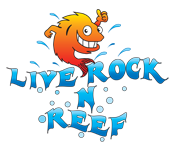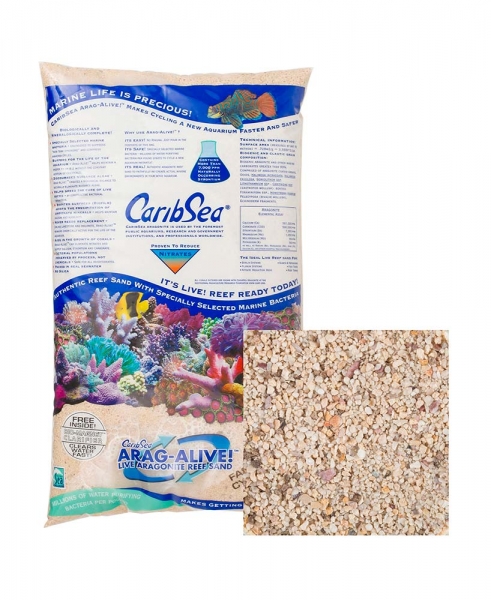If we had to choose a single type of sand for any tank, it would be the Arag-Alive Fiji Pink sand. It is by far the most popular sand for its medium to large grain size, high amount of total available surface area, as well as just its overall beauty.
Caribsea's Arag-Alive! Live Reef Sand is a great choice for new aquarists and new reef tank setups. Arag-Alive sands clear quickly and contain millions of live bacteria, speeding up your tanks cycle and leading to less nuisance algae.
Features
- Contains live bacteria to assist with a faster cycle
- Grain size: 0.5-1.5mm
- Most popular size for reef sand
- High Surface Area for Bacteria
Selecting the right sand: When choosing the right sand for your tank, it is important to keep a few things in mind.
How much flow will be in the tank?
Aquariums with high amounts of water movement will require sand with a larger grain size. Smaller particles can be blown around easily.
What kind of inhabitants will you be keeping?
Many species do require particular types of sand, like gobies, jawfish, and wrasses. Fish and invertebrates that like to burrow or sift through the sand will do best with smaller particle sizes.
Will it be for a refugium or deep sandbed?
Sand that will be used for filtration or refugium, we suggest using smaller particles that will give bacteria more surface area to grow and thrive on.
How much sand do I need?
we suggest 1 pound of Fiji Pink sand per 2 gallons of display tank volume on average.
Below is a table of common tank sizes and how many pounds of Fiji Pink sand is required to achieve a certain depth. Results may vary depending on the aquascaping in your tank, overflow styles, and the specific tank manufacturer. We always recommend getting a little extra sand to make sure you have enough on hand when you are filling your tank.
| Common Tank Sizes | Dimension | 1" Depth | 2" Depth | 3" Depth |
| 10 Gallon | 20x10x12 | 10.4 lbs | 20.8 lbs | 31.3 lbs |
| 20 Gallon | 24x12x16 | 15.0 lbs | 30.0 lbs | 45.0 lbs |
| 29 Gallon | 30x12x18 | 18.8 lbs | 37.5 lbs | 56.3 lbs |
| 30 Gallon | 36x13x16 | 24.4 lbs | 48.8 lbs | 73.1 lbs |
| 40 Gallon | 36x18x16 | 33.8 lbs | 67.5 lbs | 101.3 lbs |
| 55 Gallon | 48x13x20 | 31.8 lbs | 63.6 lbs | 95.5 lbs |
| 75 Gallon | 48x18x21 | 44.1 lbs | 88.1 lbs | 132.2 lbs |
| 90 Gallon | 48x18x24 | 44.1 lbs | 88.1 lbs | 132.2 lbs |
| 120 Gallon | 48x24x24 | 58.8 lbs | 117.5 lbs | 176.3 lbs |
| 180 Gallon | 72x24x24 | 90.0 lbs | 180.0 lbs | 270.0 lbs |
| 220 Gallon | 72x24x30 | 90.0 lbs | 180.0 lbs | 270.0 lbs |
| 300 Gallon | 72x36x27 | 135.0 lbs | 270.0 lbs | 405.0 lbs |
| Sand Type | Grain Sizes (mm) | Average Density |
| Fiji Pink | 0.5 - 1.5 | 90lbs per cubic foot |
| Special Grade | 1.0 - 2.0 | 85lbs per cubic foot |
| Bahamas Oolite | 0.25 - 1.0 | 96lbs per cubic foot |
| Indo-Pacific Black | 0.25 - 5.0 | 90lbs per cubic foot |
| West Caribbean Reef | 1.0 - 5.0 | 90lbs per cubic foot |
| Hawaiian Black | 0.25 - 3.5 | 80lbs per cubic foot |
| Bimini Pink | 0.5 - 5.0 | 90lbs per cubic foot |
| Natural Reef | 3.0 - 5.5 | 85lbs per cubic foot |
| Florida Crushed Coral | 3.0 - 5.5 | 72lbs per cubic foot |


